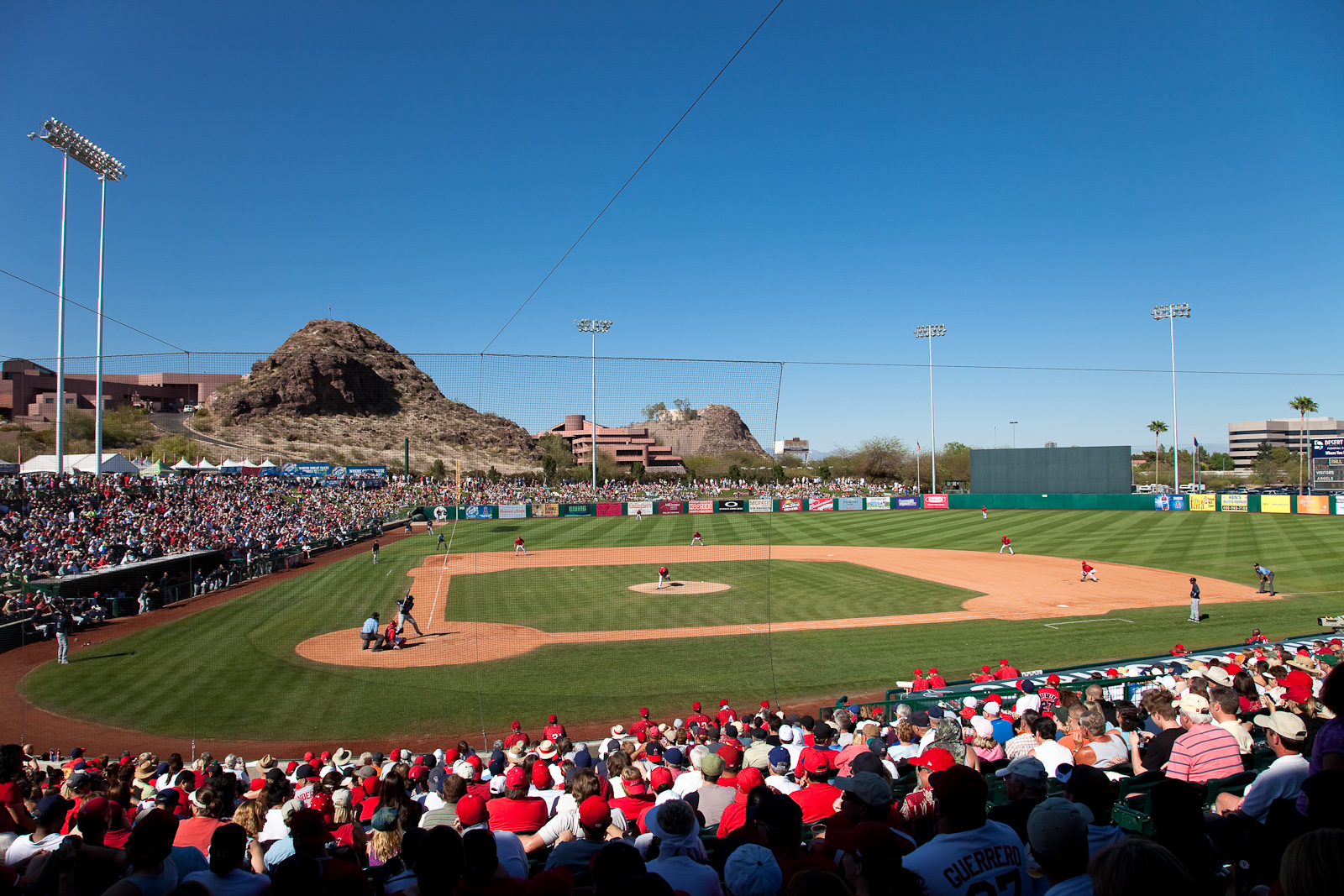I remember Spring Training
As late as the 1990s, a family of four could go to Spring Training in Arizona and enjoy a relatively inexpensive vacation watching Major League Baseball teams practice and play practice games. I know, because several times my family drove down from Northern California to take in several days of the Cactus League.
I remember all four of us going — my dad, mom, brother, and me — and I remember going with just my dad. I remember we stopped at Disneyland at least one time. But the thing I remember most vividly, given that all this happened from the time I was 5 to perhaps 10 years old, was the sheer casualness of it all.
One time, the San Francisco Giants were lined up to play catch and stretch out into long toss along the right field line of a practice field. I can see it pretty clearly in my mind’s eye because my dad and I were right alongside them, playing catch ourselves. Joe Price saw we were using a crappy ball and gave us a nicer one.
Another time, my dad had a conversation with a minor leaguer in camp who shared that he’d been the best player on every team he’d ever been on until he turned pro, at which point it became clear he was definitely not the best player on the team.
I got Bob Brenly and Will Clark to sign my plastic glove by hanging over a railing to the field and intercepting them as they went down a line of autograph-seekers. Luis Polonia went out into a public plaza in full uniform after a game and signed stuff for a small crowd of children, including me. I ate a big burger and a chocolate mousse at the Pink Pony in Scottsdale, and though I’m not sure of the memory, I seem to recall my dad spotting a few ballplayers and coaches at the bar.
Old Scottsdale Stadium had bleachers even down the baselines. I remember my family sat on the third base side, fully exposed to the unrelenting sun and heat. I remember Ernie Riles playing on the left side of the infield for the Giants. We got a great view of Carney Lansford’s distinctive shuffle shuffle hop, with the back of his glove tapping the dirt, as the pitch came in. Mark McGwire hit a ball over the batter’s eye in center field, which was 430 feet from home plate.
These days, Spring Training fields are fenced off and the experience of attending games is a lot closer to that of attending Major League Baseball games, with ticket prices to match. Teams figured out there was great demand for this experience and started charging higher prices for it, but, similar to how they’ve treated Minor League Baseball, this is sucking up immediate monetary gain at the expense of long-term growth. That is, though I can’t show it with data, I strongly suspect the upscaling of Spring Training may be “more profitable” than the old open-fences model (these days, real security concerns would probably preclude randos from playing catch alongside a Major League team’s pitching staff, anyway), but MLB is simply selling its product to the people who already pay for it instead of expanding baseball to people who don’t otherwise watch the sport or otherwise don’t wish to pay Major League prices.
This is the sort of stuff I keep thinking during the current MLB lockout. MLB owners, as a group, prioritize growing revenue and profit, which does not necessarily correlate with growing popularity or engagement. And the worst part is, most of these dudes will be dead before we learn the full scale of how they’re screwing up everything.
There’s a clear business case for MLB focusing on putting good baseball in front of as many people as possible and forgoing the “most profitable” short-term paths. Maximizing baseball’s availability across the country means maximizing high-contact, high-value interactions for people who may not have much money to spend now, but over time could end up spending more money on baseball than they would have otherwise. Furthermore, at this scale, it’s better to have many more small-money fans than just a few big-money fans, even if revenue is roughly the same.
That’s because fans always roll off, whether it’s because they develop new interests, come into a different financial situation, they die, or whatever. Maybe the team demonstrates it has little interest in trying to win baseball games. It’s better to have 1 million fans spending $20 each than it is to have 1,000 fans spending $20,000 each because it both spreads the risk of people giving up their fandom and raises the upside by creating more chances of finding people who will become big-money fans.
Spring Training isn’t for families looking to eat hot dogs and watch baseball teams play practice games, anymore; it’s for established Major League Baseball fans to watch more Major League Baseball. The game is great, and there are compelling stars, but I’m discouraged by a sense of knowing too much, knowing that MLB owners largely don’t give a damn about what I believe makes baseball fun and important.
(Photo: "tempe diablo" by Dave Nakayama. Used under CC BY 2.0 license.)
